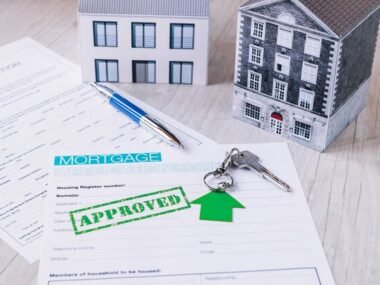Having decided to get a home, there are processes of getting mortgage-ready and buying a home. There are so many things to keep track of and prepare for. Don’t worry, in this article we’ve got you covered.
Tips to Get Your Mortgage Ready
Below are some tips to help you get mortgage-ready so you can find the perfect place to call home.
Check Your Credit Score and Report
The first step to getting mortgage-ready is checking your credit score and report. Your score and report provide a snapshot of your credit health to lenders and determine if you qualify for a mortgage, and at what interest rate.
Request free credit reports from Equifax, Experian and TransUnion to check for any errors. Dispute them immediately to get them corrected.
If your score is below 620, take steps to improve it before applying for a preapproval. Pay down credit card balances to lower your credit utilization ratio, reduce new applications for credit, and make on-time payments for all bills. Check your score again in 3-6 months to make sure it’s trending upward.
A higher score, ideally over 680, means qualifying for a better mortgage rate, which can save you thousands over the life of the loan. So put in the work to maximize your score.
Calculate Your Debt-to-Income Ratio
To get approved for a mortgage, lenders will evaluate your debt-to-income ratio (DTI). This is the percentage of your gross monthly income that goes toward paying off debt like credit cards, auto loans, and student loans. The lower your DTI, the better.
Aim for a DTI of 36% or less. If it’s higher, work to pay off debt before applying for a mortgage. Make extra payments, cut spending, and avoid taking on new debt.
Pay off small balances first. Knock out debts like credit cards to quickly lower your DTI. Then roll payments from paid-off debts into larger ones.
Negotiate lower interest rates. Call creditors and ask if they’ll lower your rates. Explain you’re working to pay off debt and want to be in a better position to qualify for a mortgage. They may work with you.
READ ALSO: Is Working Capital Loans Right For Your Business?
Save for a Down Payment
Here are some tips to save for your down payment:
1. Make a savings plan
Figure out how much you need to save each month to reach your goal. Open a separate high-yield savings account just for your down payment fund. Automate transfers from your checking account each month. Little by little, your balance will grow.
2. Reduce expenses
Look for ways to cut costs in your budget like eating out less, canceling unused subscriptions, or driving an extra year before getting a new car. Put the money you save each month directly into your down payment fund. Making a few small lifestyle changes can really add up over time.
3. Increase your income
Ask for a raise at your job, develop a side gig, or pursue a higher paying position. The more you can add to your income, the faster you’ll save for a down payment. An extra $500 a month can mean $6,000 more toward your goal in a year.
4. Save any windfalls
Put any extra money from bonuses, tax refunds, or gifts directly into your down payment savings. Make a habit of automatically depositing at least half of any unexpected cash into your fund.
5. Invest for growth
Once you have several thousand dollars in your down payment fund, consider investing a portion of it for higher returns. Talk to your bank about options like high-yield CDs, treasury bills or index funds. Keep the money you need for your down payment within the next year in your savings account for easy access, but invest the rest for the potential to grow your balance faster.
READ ALSO: Does Auto Insurance Follow The Car or The Person?
Get Pre-Approved for a Mortgage
Getting pre-approved for a mortgage before you start house hunting is one of the smartest moves you can make. Here’s why:
1. Know Your Budget
A pre-approval will tell you exactly how much the bank is willing to lend you for a mortgage. This helps you determine a realistic budget for what you can afford in a new home. Without it, you could fall in love with a house that’s way out of your price range!
2. Make a Stronger Offer
Sellers will see you as a serious, qualified buyer. This means they are more likely to consider your offer and you’ll have stronger negotiating power. You can confidently bid on homes knowing you have the financing secured.
3. Lock in an Interest Rate
Interest rates go up and down over time. By getting pre-approved, you can lock in the current interest rate for up to 60-90 days while you shop. This protects you from rate hikes that could cost you thousands more over the life of your loan.
4. Speed Up the Closing
Since the bank has already reviewed and approved your financial paperwork, the closing or settlement process will move much faster.
5. Prepare Your Documents
Gathering the necessary documents for a mortgage application like pay stubs, tax returns, bank statements, etc. can take weeks. Getting pre-approved allows you to compile everything upfront so you’re ready to submit a full mortgage application as soon as you find a house you want to buy.
READ ALSO: Biweekly vs Monthly Mortgage Payments: What You Need to Know
Shop Around for the Best Rates and Lenders
Once you’ve decided you’re ready to buy a home, it’s time to find a mortgage. Shopping around at different banks and lenders for the best rates and terms is one of the smartest things you can do.
1. Check your credit score
Your credit score determines your eligibility for a mortgage and impacts your interest rate. Check your score and credit report for any errors. Pay off or pay down credit cards to lower your credit utilization ratio.
2. Compare interest rates
Interest rates can vary significantly between lenders. Compare fixed and adjustable rates to determine what works best based on how long you plan to stay in the home. Look at rates and APRs, which include fees, to determine the true cost.
3. Consider different lenders
Don’t just stick to big banks. Online lenders, credit unions, and mortgage brokers also provide home loans. Compare their rates and fees to find a good deal. Some lenders may charge origination fees while others don’t.
4. Negotiate the best deal
Once you’ve compared a few good options, negotiate with the lenders to get the best overall deal. Discuss both the interest rate and lender fees. See if they’ll match or beat a competitor’s offer. Ask if there are any promotions or discounts you may qualify for.
5. Lock in your rate
When you find an offer you like, lock in the interest rate. Rates change daily, so locking it in ensures the rate won’t go up before closing. There may be a small fee for locking in, but it protects you from rate hikes that could cost you thousands over the life of the loan.
Shopping around for a mortgage and negotiating the best deal could save you a bundle over the years. While it requires some work, buying a home is a huge investment, so putting in the effort upfront is well worth it.
Conclusion
So there you have it, 10 tips to get mortgage-ready and make your home buying dream a reality. Buying a house is a big step, but if you go in prepared by boosting your credit, saving up for a down payment, and getting preapproved, you’ll be in a great position.





